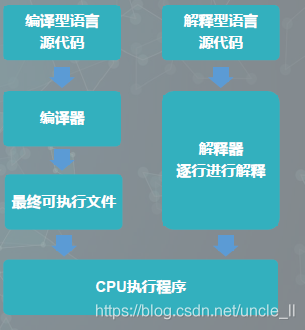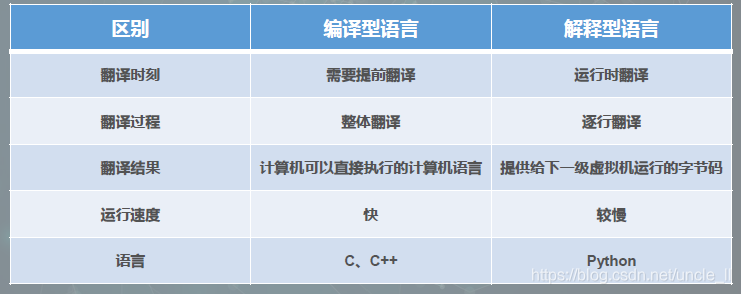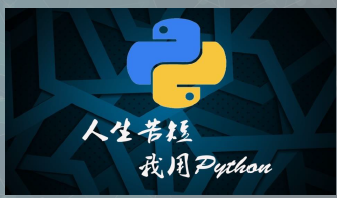Python from entry to proficiency (2): Introduction to Python
1. Python Origin
At Christmas 1989, Guido decided to develop a new script interpretation language as a successor to the ABC language. ABC language is a teaching language designed by Guido, but over time, ABC language has not become widely popular due to its own closed language characteristics.
1991 In 1998, the first version of Python was born on Guido’s Mac. The reason why Guido named this new programming language Python is because he likes a TV series-Monty Parson’s Python Troupe The Flying Circus (Monty python)
The first Python interpreter written by Guido was implemented in C language and was able to call library files in C language, all also known as CPython. Use Python interpreters implemented in other languages, such as the JPython interpreter implemented in Java and the PyPy interpreter implemented in Python.
After nearly 30 years of continuous updating and improvement, Python is called an interpreted, object-oriented high-level programming language. In different fields, different projects are used by developers.
From 2012 to 2019, Python became the fastest-growing mainstream programming language used by developers and was the language of the year in the 2018 TIOBE programming language rankings.
https://hellogithub.com/report/tiobe/
2. Compiled language and interpreted language
Computers cannot understand or directly execute high-level programming languages. They can only understand binary-encoded machine language, that is, machine code. Before running any programs written in high-level languages, they must first translate the high-level languages into computer languages. It is divided into two types: Compilation and Interpretation. The corresponding translation tools are called compiler and interpreter.

The comparison between the two is shown in the figure below:

3. Object Oriented
-
Object: refers to a certain kind of things with similar characteristics during the running of the program. The characteristics include attributes and actions. Attributes are their properties, actions are corresponding functions, and what operations can be performed;
-
In the object-oriented programming scenario, when you want to solve a specific problem, you only need to consider who will do it, instead of paying attention to the completed process, and finally confirm the finished result.
-
**The target ** is who;
-
To solve complex problems, you need to find multiple different objects, perform their duties, and finally complete the requirements
Python is a completely object-oriented language. Strings, numbers, functions, and modules in Python are all objects; it fully supports the three features of object-oriented encapsulation, inheritance, and polymorphism; standard libraries based on object-oriented design ideas, and a large number of third parties Module.
4. Language Features of Python
Design philosophy: elegant, clear and simple
The same problem, different languages:
- C: 1000 rows
- Java: 100 lines
- Python: 20 lines
The author of Java programming thought commented on Python: "life is short, you need Python", translated into Chinese, it means that life is short, I use Python.

advantage:
- Simple and easy to learn: Python’s three design philosophies make this language extremely easy to learn;
- Free, open source: free to download and use, allowing everyone to read and copy its source code;
- Object-oriented: more flexible and easy to maintain;
- Cross-platform: The written code can run on different systems, including windows, Linux, Mac OS, etc.;
- Interpreted language: no need to compile in advance, you can use the interactive command line window to program, and return the result immediately;
- Rich standard library: very complete, can help deal with various scenarios, including regular expressions, databases, network programming, etc.
Disadvantages:
- Running speed: slower than compiled languages such as C and C++;
- Strict code format specifications: the same number of spaces must be used for indentation, and the requirements are strict;
5. Trends and Applications
- Web development: It can meet the needs of rapid iteration and is very suitable for Web development application scenarios. Excellent web frameworks: Django, Tornado and Flask, etc.;
- Web crawler: crawler is the core tool for data acquisition in the big data industry. Python is one of the absolute mainstreams in the crawler field with its high-performance data collection capabilities;
- Data analysis: With the development of many libraries such as Numpy, Pandas, Matplotlib, Python has become one of the two mainstream languages for data analysis (the other is the R language);
- Artificial intelligence: machine learning, neural network, deep learning and other aspects in the field of artificial intelligence are all mainstream programming languages, which are widely supported and applied;
6 Most used software
-
development tools
-
vs code
-
Pycharm
-
Code management tools
-
GIT
-
SVN
-
Other tools
-
Jira
-
Redmine
-
Xmind
7 Development Community
-
foreign:
-
Github(https://www.github.com)
-
StackOverflow(https://stackoverflow.com/)
-
Python mailing group (https://www.python.org/community/lists/)
-
domestic:
-
Huamang (https://groups.google.com/g/python-cn)
-
CSDN(https://www.csdn.net/)
-
Open Source China (https://www.oschina.net)
-
v2ex(https://www.v2ex.com)
Recommended Posts